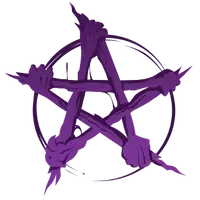Table of Contents
The Wheel of the Year is an important part of the Wiccan tradition. It’s a cycle of eight festivals, known as Sabbats, which mark the turning of the seasons. These are celebrated on the solstices, equinoxes, and four traditional ‘fire’ festivals that fall in between. Each of the Sabbats has its own unique name, meaning, and symbolism.
The Wheel of the Year begins at Yule, which marks the rebirth of the Sun and the return of the light. Imbolc is the celebration of the Goddess in her maiden form, while Ostara marks the fertility of the Earth. Beltane marks the union of the God and the Goddess, while Litha celebrates the peak of the Sun’s power. Lughnasadh celebrates the first harvest, while Mabon is the second harvest and the descent of the Sun into darkness. Samhain marks the end of the cycle and the death of the God.
Celebration of the Wheel of the Year is an important part of the Wiccan tradition. According to Wiccan beliefs, these eight festivals symbolize the cycle of life and the continuity of existence. Each Sabbat is an opportunity to reflect upon the lessons of the past, celebrate the present, and look toward the future. Through rituals, feasting, and activities, Wiccans honor the changing of the seasons and the cycle of death and rebirth.
Throughout the course of the year, Wiccans will celebrate holidays to mark the passage of time and the cycle of the seasons. In most traditions, this Wheel of the Year, as it is called, will begin on Samhain or October 31. Here is a summary of what happens at each of these holidays and what magic might be worked during these times.
Yule
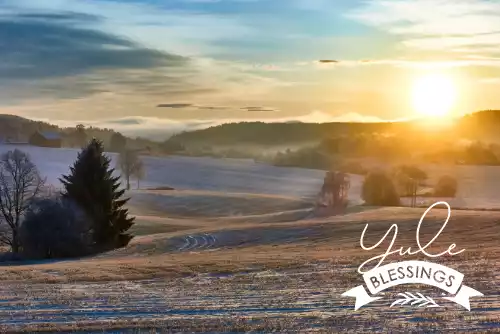
Also known as Winter Solstice, Yule is the time when the world is quiet and still and so very dark. On the longest night of the year, these rituals might sing songs to welcome back the sun to celebrate making it through the dark time of the year. Rituals might include lighting candles to welcome the dawn, and some Wiccans will stay up all night to sing up the sun.
Celebrating Yule: An Introduction to the Wiccan Holiday
The winter solstice marks a major milestone in the journey of the year and is celebrated by many cultures around the world, including the Wiccan holiday of Yule. This special day has been celebrated for centuries and is a time for giving, reflecting, and celebrating the coming of the light.
Yule traditionally marks the beginning of the Wiccan year and is a time for renewal and reflection. Celebrations usually begin on the eve of the solstice and last for 12 days. During this time, Wiccans honor the winter darkness and celebrate the rebirth of the sun.
Yule is a time to reflect on the past year, contemplate the future, and celebrate the light that comes with the new year. It is a time to practice gratitude and generosity and to give to each other. Yule is also a time for divination and magick-making, as Wiccans and Pagans use the energy of the season to manifest their desires for the coming year.
On Yule, many Wiccans hold feasts and rituals to honor the sun and celebrate the passing of the old year. Traditional activities include feasting, decorating the home, lighting candles, and crafting with natural elements like evergreen branches and holly berries. Wiccans may also practice divination and lay out cakes, fruits, and nuts as offerings to the gods.
Yule is a special time and a reminder to be grateful for the light and life that comes with the changing season. It is a time for Wiccans and Pagans to come together in celebration, to reflect on the past, and to look to the future with hope.
Whether you’re a Wiccan looking to celebrate Yule, or someone looking to learn more about this special holiday, we hope this article has given a helpful overview of all that Yule has to offer. Happy Yule!
Imbolc
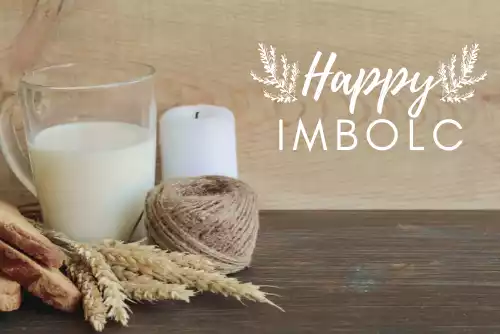
Imbolc is the time that is right around February 1, right when the world is beginning to wake up from its winter slumber. The first offspring of animals are starting to be born, and it’s time to start thinking about planting for the next year. This is also a time that is special to Brigit, a Celtic fire goddess. She is the one of the forge and the well, the one who helps women in childbirth and who also helps with growth and renewal.
The Wiccan Holiday Imbolc
The Wiccan holiday Imbolc is celebrated on February 1st and marks the beginning of spring in many Pagan cultures. It is a time of renewal and preparation for the coming year when the Goddess is honored and the Earth begins to awaken from its winter slumber.
Imbolc is a time of cleansing, purification, and self-reflection. Many Pagans use this time to ritually cleanse their home and themselves. This can be done through smudging with sage, offering food and drink to the Gods and Goddesses, or bathing in a sacred pool.
Imbolc is also a time for divination. Many Pagans use this holiday to reflect on the past year, set goals for the upcoming year, and plan for the future. Divination techniques such as tarot card readings and dream interpretation are especially popular during this time.
The Goddess is also honored during Imbolc, as it is believed that this holiday marks the awakening of the Earth Goddess from her winter slumber. Rituals and offerings to the Goddess can be done to show respect and to ask for guidance and protection.
Imbolc is a time of hope and renewal, a reminder that no matter how dark the winter may seem, spring is just around the corner. It is a time to reflect on our past, set intentions for the future, and honor the Goddess.
Ostara
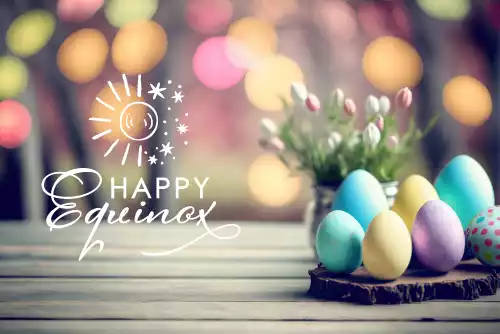
Known often as Spring Equinox, Ostara is a time when the spring is beginning to warm the lands, and the light is even more quickly filling the skies and the nights. This is a time for looking at the seeds and seeing what can be done to create the most growth in the coming year. This is also a time to consider balance of light and dark and how you can tip yourself into the light.
Celebrating Ostara – The Wiccan Holiday of Renewal
Ostara, or the Spring Equinox, is a Wiccan holiday that occurs around the 20th or 21st of March every year. It is a time of renewal and rebirth and is celebrated with various rituals and ceremonies.
This holiday is commonly associated with the goddess Ostara (also known as Eostre), from whom the holiday gets its name. This goddess is believed to be a symbol of fertility, growth, and abundance. Her symbols are associated with eggs and rabbits, and many Wiccans celebrate Ostara by creating decorations with these symbols.
Ostara is a time of celebration, and many Wiccans use this holiday to honor nature and the changing of the seasons. The holiday is typically celebrated outdoors, where people can appreciate the beauty of the natural world. It is believed that Ostara marks the time of balance between light and dark, as the days start to become longer and the nights shorter.
On Ostara, many Wiccans practice rituals of renewal, often involving the use of fire, water, or the elements of Earth, Wind, Fire, and Water. These rituals can involve anything from meditating on the meaning of the holiday to making offerings to the gods and goddesses. Some Wiccans also use Ostara as an opportunity to make changes in their lives.
No matter how you choose to celebrate Ostara, it is a holiday of renewal and rebirth. So, take the time to appreciate the beauty of nature and the changing of the seasons, and use this opportunity to create a new beginning for yourself.
Beltane
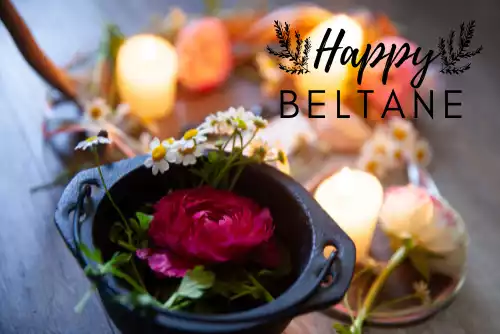
Around May 1, Beltane is celebrated as a time of fertility and lust. Rituals often include dancing around a Maypole as a symbol of regeneration and coming together as a community. This is also a time of bale fires, and in modern times, ritual participants might jump over a fire together with someone else, making a promise to each other for the following year.
Celebrating Beltane: A Guide to the Wiccan Holiday
Beltane is one of the eight sabbats celebrated by Wiccans throughout the year, and it is a particularly important holiday for many practitioners. This celebration marks the halfway point between the Spring Equinox and the Summer Solstice; it is a time of fertility and abundant life, a reminder of the bounty of nature and the beauty of the spring season.
During Beltane, Wiccans celebrate by lighting bonfires, dancing around them, and blessing the flames with offerings of herbs. In addition, there are many rituals and activities that Wiccans may participate in to honor and celebrate Beltane. Some of these activities include decorating a Maypole, blessing gardens, and making flower garlands. Altars are also decorated, and offerings are given to gods and goddesses associated with fertility. In addition, many Wiccans practice divination and scrying to try to glimpse the future.
It is important to remember that Beltane is a joyful celebration, and so it is important to focus on the love and joy of the season. That said, it is also important to remember that Beltane is a time of fertility and that it is a time to honor the goddesses and gods of love, beauty, and fertility.
Beltane marks a time of great energy and intensity, and it is a time to celebrate the bounty of nature and the beauty of the season. It is a time to honor the gods and goddesses associated with fertility and to give thanks for the abundance of life that is around us. With this in mind, let us all celebrate Beltane and all that it has to offer!
Litha
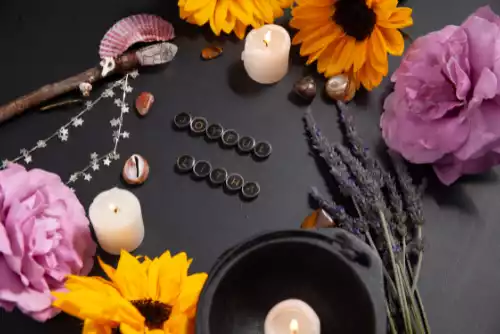
On Summer Solstice, the longest day is celebrated, and it’s a time of joy mixed with sadness. While the light has returned and has been making the living things grow, this is also the day when the light will begin to fade and diminish. This is a time when being out in the hot of the sun is a blessing and a reminder that all things change.
Celebrating Litha: The Wiccan Sabbat at the Midpoint of Summer
Litha is a major celebration in Wicca, traditionally observed around the summer solstice. It is a time of joy, fertility, and abundance and a powerful opportunity to honor the divine and the natural world.
Litha is celebrated on the day of the summer solstice when the sun is at its peak in the Northern Hemisphere. This is the longest day of the year, and the night before is known as Midsummer’s Eve. During this time, witches pay homage to the Celtic Sun God and the Goddess.
The holiday is celebrated through rituals, spells, and offerings. Many witches will perform rituals to invite good fortune and attract positivity. They may also offer up things such as food, herbs, incense, and candles in honor of the Gods or their ancestors.
Other ways of celebrating Litha include creating sacred spaces, such as altars, dedicating to personalized rituals, or spending time in nature. This can be done alone or with loved ones. The idea is to honor the turning of the wheel of the year and the sacredness of life.
In other traditions, Litha is often celebrated with bonfires, which act as a cleansing ritual and symbol of rebirth. Many also believe that fire carries away negative energy. This is a powerful way to release any negative thoughts and emotions that may have accumulated during the year.
Litha is a special time of the year when witches and other spiritual practitioners can come together to honor the Gods and the natural world. It is a beautiful time to celebrate life and all its abundance.
Lughnasadh
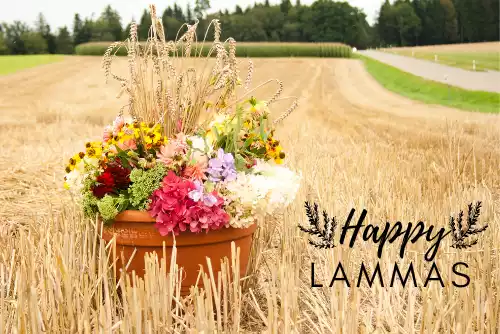 Also known as Lammas, Ludhnasadh is a day for Lugh, a sun god who liked to play games. This is a day when the ritual might include everyone playing games and having a feast together, as the first harvest has emerged and it’s time to celebrate successes.
Also known as Lammas, Ludhnasadh is a day for Lugh, a sun god who liked to play games. This is a day when the ritual might include everyone playing games and having a feast together, as the first harvest has emerged and it’s time to celebrate successes.
Lughnasadh: Celebrating the Wiccan Harvest Festival
Lughnasadh is a Wiccan holiday that marks the beginning of the harvest season. The festival, which is also known as Lammas or August Eve, is celebrated on the first day of August.
Lughnasadh is seen as a time to give thanks for the abundance of the harvest, to honor the gods, and to honor the dead. During the festival, Wiccans will often perform rituals that honor the god of the harvest, Lugh. They may also build a corn dolly and decorate it with symbols of the harvest, such as wheat and corn.
In addition to giving thanks for the harvest, Lughnasadh is also a time for Wiccans to reflect on their own lives and to set intentions for the coming year. They may also take part in activities such as crafting magical amulets, making offerings to the gods, and celebrating with a feast.
Lughnasadh is an important part of the Wiccan tradition, and it is a time for Wiccans to come together and celebrate the abundance of the harvest. It is also a time to reflect on the changing of the seasons and to set intentions for the coming year. No matter how you choose to celebrate, Lughnasadh is a great way to honor the gods, and the dead and to give thanks for the abundance of the harvest.
Mabon
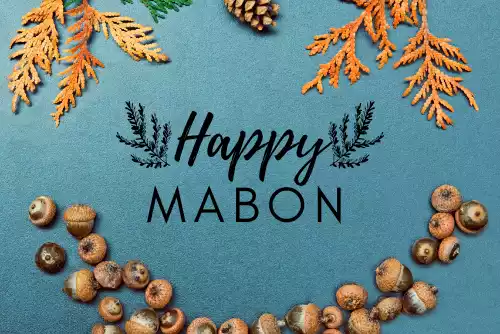
On Fall Equinox, there are celebrations of the second harvest, as well as realizations that you may not have planted enough for the winter. This is a time to gather together with those you love to begin to settle into the dark and cold times.
Celebrating Mabon: A Look at the Wiccan Holiday
Mabon is a Wiccan holiday that celebrates the second harvest of the year. It is celebrated on the autumnal equinox, usually falling around September 21st. This holiday is marked by various rituals, activities, and celebrations.
The myth of Mabon is based on the cycle of the seasons and the natural balance of the earth. It symbolizes the cycle of nature, the balance between light and dark, and the changing of the seasons. The theme of the Mabon myth is often reflected in the activities associated with the celebration.
The main ritual of Mabon is the creation of a harvest wreath. Traditionally, this wreath is made with a variety of fall leaves, flowers, and herbs. These decorations symbolize the bounty of the harvest and the circle of life.
Feasting is another important part of Mabon. Many Wiccans prepare a feast of seasonal foods, such as fruits and vegetables from the harvest. These dishes are often shared with family and friends to symbolize the abundance of the season.
Gifting is another important part of the Mabon celebration. On this day, Wiccans often exchange small tokens of appreciation with each other. This could be a special charm or trinket, a handmade item, or a gift of food. This is a way of honoring the bounty of the harvest and expressing gratitude for one another.
Samhain
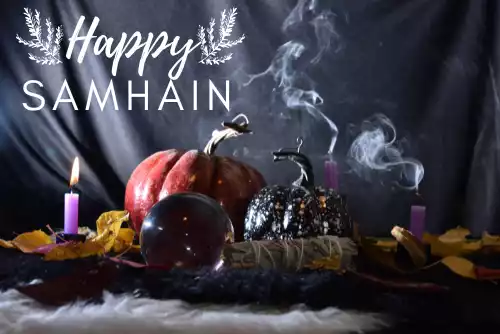
On this day, Halloween, the souls of the dead are closer to the living than they are at any other point of the year. This is a time when people might be able to contact those who have passed away since it’s said the veil is thinner between the worlds. During rituals at that time, there might be time to sit with the dead and to celebrate their lives, as well as to find moments to contemplate one’s own death and the wisdom of the ancestors.
A Guide to the Wiccan Holiday Samhain
Samhain is an ancient Celtic holiday celebrated by modern Wiccans to honor their spiritual lineage and mark the end of the harvest season. Celebrated on October 31st, it is a time for reflection, remembrance, and celebration.
The word “Samhain” is derived from the Gaelic word for “summer’s end” and was once one of the most important holidays in the Celtic calendar. To Wiccans, it is considered a time of transition and a new beginning. It is a time to honor the past and prepare for the future.
Samhain is usually celebrated with a ritual feast, which often includes traditional Halloween items such as pumpkins, apples, and nuts. It is customary to wear costumes and masks so that spirits may recognize those who are honoring them. This is also a time to practice divination and foretell the future. After the feast, participants often gather around a bonfire and recite prayers and chants.
For those who wish to honor the ancient tradition of Samhain, there are several activities that can be done. Many Wiccans decorate their homes with traditional symbols such as skulls and candles. It is also customary to burn incense and invoke the spirits of the dead. On this day, it is believed that the veil between worlds is at its thinnest, so many Wiccans will use this day for scrying, divination, and spirit contact.
Samhain is a time for connecting with the past and looking forward to the future. It is a time to make peace with the dead and to celebrate the cycle of life. For those who wish to honor the Spirit of Samhain, it can be a beautiful and spiritual experience.
Conclusion
To conclude, the Wiccan Wheel of the Year and the Wiccan holidays are an important part of the Wiccan faith, and its followers celebrate these holidays and use the Wheel of the Year to guide their spiritual journey. Celebrating these holidays helps to bring balance and harmony to their lives and to the world around them. As these holidays come and go, they remind us all of the balance between light and darkness, the cycle of life, and the power of nature. As we move through the Wheel of the Year, let us be mindful of this balance and celebrate its power to bring us closer to our spiritual path.
High Priestess Memoona is a well-known and respected spell caster and magical practitioner with more than five decades of experience. She is a master of her craft, having used her powerful abilities to bring people joy, unconditional love, and prosperity. With her unique approach to spell casting, High Priestess Memoona has helped countless individuals manifest their life dreams and achieve their goals. Her expertise and dedication to the craft have made her a highly sought-after Spell Caster, and she is proud to be able to offer her services to those who seek her aid.

